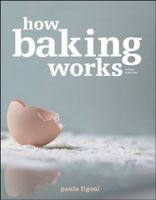Advertisement
Makeup of Margarine
By Paula Figoni
Published 2003
Most margarines that are partially hydrogenated are made from soybean oil, but they can be made from any vegetable or animal fat. For example, trans fat–free margarines are often made from naturally saturated palm oil. True margarine has a similar composition to butter; that is, it contains a minimum of 80 percent fat and about 16 percent water, and a similar amount of air is trapped in margarine as in butter. This means that margarine has the same number of calories as butter. While low-fat and fat-free “margarines” (called spreads) do exist, these products do not generally work well in baking. Low-fat and fat-free spreads contain a high amount of water. They rely on gums and starches to provide a butter-like consistency.


